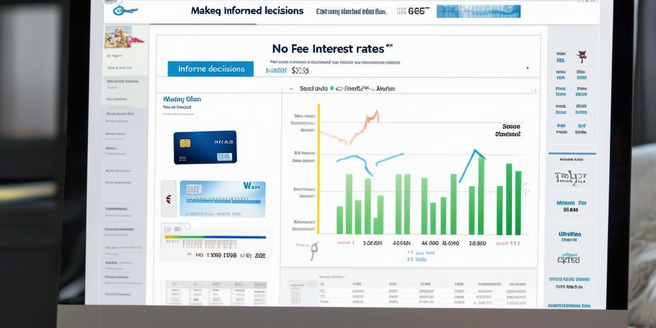
Understanding the ‘No Fee’ Concept
No fee credit cards often lure customers with the promise of saving on annual fees. However, it’s essential to understand that ‘no fee’ often refers only to upfront costs. Behind the appealing offer, these cards may carry other types of charges. Banks compensate for the lack of annual fees through higher interest rates or reduced benefits. Users should investigate the terms carefully to identify if the promised savings are genuine or overshadowed by hidden costs and fees accumulated through transactions, such as foreign exchange or balance transfers. A deep dive into the fine print ensures that the no-fee promise aligns with your financial habits, and safeguards against unexpected financial burdens.
Annual Percentage Rates: What to Watch For
A low APR credit card might sound appealing, yet variable APRs can catch cardholders off guard. The advertised APR often applies only to those with excellent credit scores, whereas others are offered higher rates. Many cards enforce high post-promotional APRs after introductory periods or vary rates based on Prime Rate changes. Additionally, understanding differences between purchase, cash advance, and balance transfer APRs is crucial to making informed credit decisions. Hidden terms like penalty APRs, which activate upon missed payments, can significantly increase debt over time. By scrutinizing APR structures and monitoring for alterations made by financial institutions, one avoids unintended financial strain.
Currency Conversion Fees Explained
Travelling abroad with your ‘no fee’ credit card might seem convenient, but currency conversion fees can add up quickly, dimming the allure. Hidden within transactions made in foreign countries, these fees can range from 1% to 3% of each transaction that involves a foreign currency. While one might see some value in banks managing currency exchange, it often results in costlier payments when compared to dedicated travel cards offering more competitive rates. Understanding how your card computes these charges, and whether or not your issuer imposes extra fees beyond the conversion cost itself, is vital in assessing its true cost-effectiveness for international travel.
Late Payment and Overlimit Penalties
Although ‘no fee’ cards waive annual charges, they often have penalties that can quickly accumulate if not managed wisely. Late payment fees are a common pitfall, whereby even a single missed deadline can trigger high costs and potentially increase your APR to a penalty rate, making future debts more expensive. Similarly, overlimit fees apply when your spending exceeds the card’s credit line, usually resulting from transactions being approved despite the limit breach. These penalties, while avoidable, require diligent tracking of payment schedules and credit availability to ensure that what began as savings does not culminate in substantial financial penalty.
Cash Advance Fees and Their Implications
While pulling cash from a credit card can be a quick fix, cash advances often come with a hefty price tag. Most ‘no fee’ cards impose cash advance fees, which typically range from 3% to 5% of the transaction amount, in addition to a higher APR immediately applied to the advance. Unlike purchases, there is no grace period for cash advances, meaning interest starts accruing right away and can significantly raise the cost of borrowing. Understanding these implications helps cardholders assess the long-term costs associated with cash advances, fostering more strategic financial choices during cash emergencies.
Balance Transfer Fee: A Closer Look
A balance transfer allows cardholders to shift debt from one card to another—usually to benefit from lower introductory interest rates. While this can strategically help manage debt, ‘no fee’ credit cards typically charge balance transfer fees between 3% to 5% of the amount transferred. This fee can negate the initial savings expected from a lower APR. It’s crucial for individuals looking to optimize their finances by transferring balances to scrutinize terms carefully, understanding both the short-term and long-term financial impact, and ensuring it facilitates genuinely beneficial debt management rather than just redistributing costs differently.
